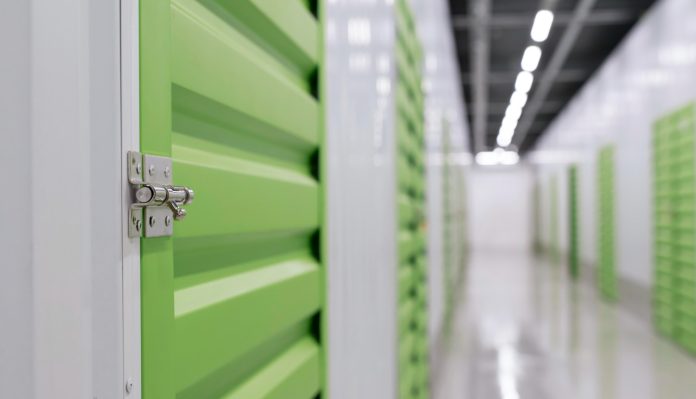Walls come down, dust floats up, and suddenly there’s nowhere for the couch to go. During a remodel, the smartest move may be clearing the room instead of dodging drop cloths. Many households turn to companies like Nesta Storage early in the process, using short-term space to protect furniture and keep projects moving.
That small decision could cut clutter, reduce accidental damage, and make each day feel less uncontrollable. When sofas, bookshelves, artwork, and cables stay in the zone, they slow down setup and make every pass with a ladder awkward for everyone. Moving items to dedicated home storage can create room for tools and give contractors clear walk paths. That could reduce delays and last-minute scrambles for protective covers.
What Self-Storage Does for Project Flow
A temporary unit holds the bulky stuff: sectionals, dining sets, media consoles, framed prints, boxed kitchenware, and the seasonal bins that already live on the floor. With fewer obstacles, crews can stage materials, measure once, cut one time, and leave surfaces prepped without weaving around armchairs and clutter. That could keep the work and timelines easier to handle.
How to Choose the Right Unit Size
Estimate by using the big pieces first and the boxes second. Walk each space and list what actually leaves the home during demolition or painting, then stack that against the unit sizes in cubic footage rather than winging it.
If a living room set and two bedrooms are moving out, you can upsize one tier so the aisles stay open for quick access. Vertical stacking only works when you can safely reach what’s behind it. It doesn’t help anyone if you play Tetris with the boxes and risk injuring yourself or breaking your belongings.
Packing Tips for Home Storage
Don’t rush the labeling process. One easy way to get it done is to group boxes by room and then task. So, you can label everyday cooking tools “Kitchen: daily cooking,” or linens, “Bedroom: linens.” It’s also important to mark the fragile sides clearly with arrows so you or your helpers can keep the right orientation.
Wrap the legs and corners with cardboard, use furniture blankets on wood, and bag hardware in small, taped pouches on the piece it belongs to. That may spare a night of hunting for mystery screws during move-back day.
What Belongs in Climate-Controlled Units
Some things hate temperature swings. Think guitars, oil paintings, leather chairs, photo albums, and electronics that don’t love humidity. Storing those in a climate-controlled environment may keep finishes from warping, canvases from reacting, and devices from collecting moisture while walls cure or floors acclimate. That’s particularly helpful during multi-week projects with doors propped open.
Short-Term Flexibility Fits Real Timelines
Renovation is a chaotic process, and schedules shift. That’s normal, even if it’s annoying. Month-to-month options let households extend a week or cut time short without rewriting the whole plan when tile shipping dates move.
If work wraps early, you can stage the return in two rounds: first necessities, then décor. When you use that process, rooms tend to come back cleanly, which may reduce scratches and rushed lifting after a long walkthrough.
Protecting Value While Crews Get to Work
Security and peace of mind matter when your living room lives elsewhere. Look for facilities with controlled entry, cameras, good lighting, and hours that match your contractor’s start or your weekend window for box runs. Some providers also outline insurance options for stored goods, which may offer additional peace of mind when floors are sanded or cabinets are sprayed back at home.
Making the Most of Business Storage Options
Renovating a home-based studio or small office creates similar headaches. Shelving, samples, and inventory eat floor space while installers wait for room to cut and place materials. A short-term business storage unit can hold packaged goods, archived files, and spare fixtures.
Always Keep a Checklist
It’s rare not to lose anything during a move, but you can lessen the odds. Keeping a checklist may prevent a breakdown or two. Take photos of electronics before unplugging, bundle cords with painter’s tape, and place remotes in a single, labeled bag so the TV setup doesn’t become an unsolvable jigsaw puzzle.
FAQs
How early should storage be booked?
As soon as the dates are relatively set. Renovation calendars are notorious for changing with no notice, but reserving a unit a little early could prevent last-minute scrambles if demo starts sooner than expected or a facility is low on vacancies.
What size works for a typical living room?
It varies by furniture footprint. A quick phone consult with the provider could help turn your list into a workable size and avoid renting too small.
Is short-term storage costly?
Costs depend on size, features, and length of stay. Month-to-month options may keep budgets flexible while timelines settle, especially on multi-phase projects.
What if regulations apply to the project?
Rules differ by location and project type. When permits or special practices apply, check local guidance so storage timing aligns with inspection windows.



 Bitcoin
Bitcoin  Ethereum
Ethereum  Tether
Tether  XRP
XRP  USDC
USDC  TRON
TRON  Lido Staked Ether
Lido Staked Ether  Cardano
Cardano  Avalanche
Avalanche  Toncoin
Toncoin  Solana
Solana